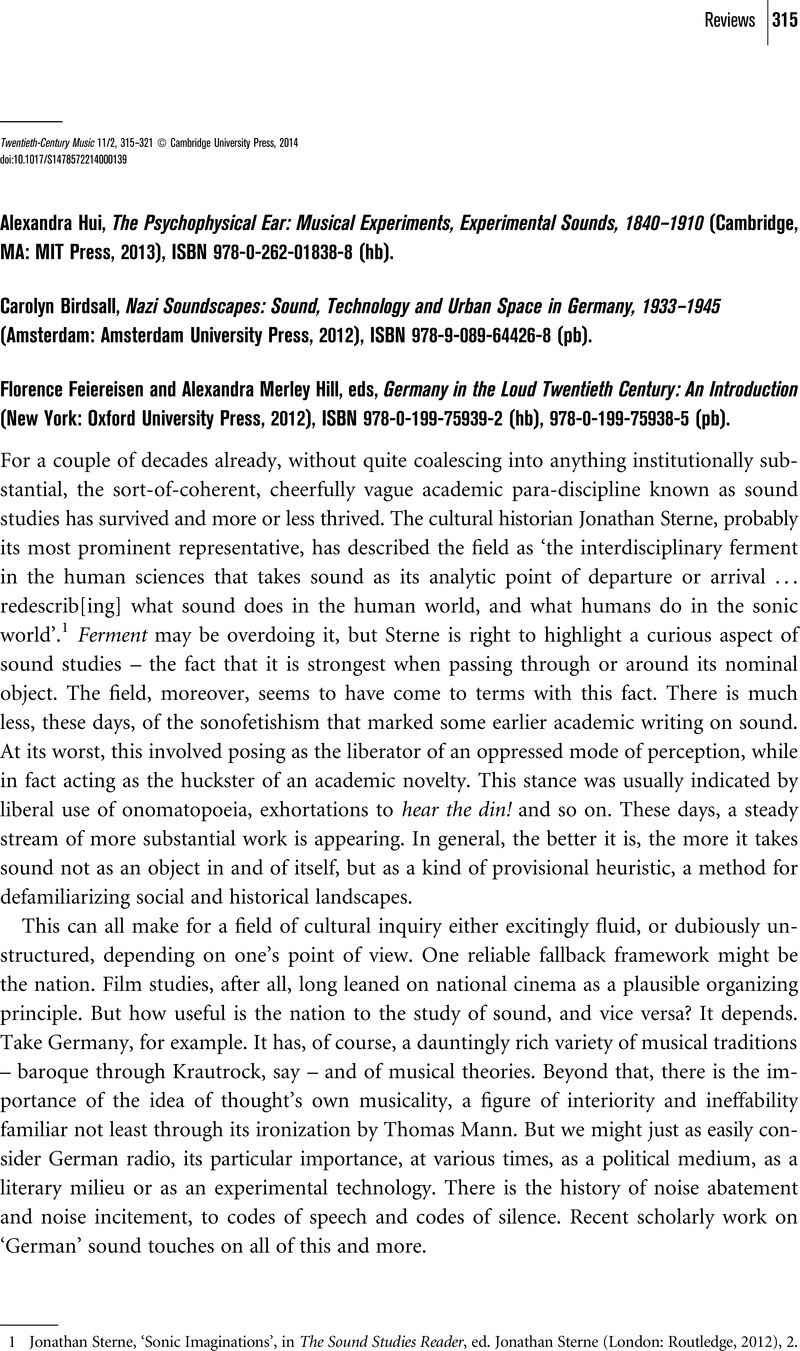No CrossRef data available.
Published online by Cambridge University Press: 30 July 2014

1 Sterne, Jonathan, ‘Sonic Imaginations’, in The Sound Studies Reader, ed. Sterne, Jonathan (London: Routledge, 2012), 2Google Scholar.
2 See above all Rehding, Alexander, Hugo Riemann and the Birth of Modern Musical Thought (Cambridge: Cambridge University Press, 2003)CrossRefGoogle Scholar, lucidly criticized by Leslie David Blasius in his review in Nineteenth-Century Music Review 2/2 (2005), 179–82.
3 As an introduction to this vast subject, see Currid, Brian, A National Acoustics: Music and Mass Publicity in Weimar and Nazi Germany (Minneapolis: Minnesota University Press, 2006)Google Scholar; Hake, Sabine, Popular Cinema of the Third Reich (Austin: University of Texas Press, 2002)Google Scholar; Elsaesser, Thomas, ‘Lifestyle Propaganda: Modernity and Modernization in Early Thirties Films’, in his Weimar Cinema and After: Germany's Historical Imaginary (London: Routledge, 2000), 383–419Google Scholar.